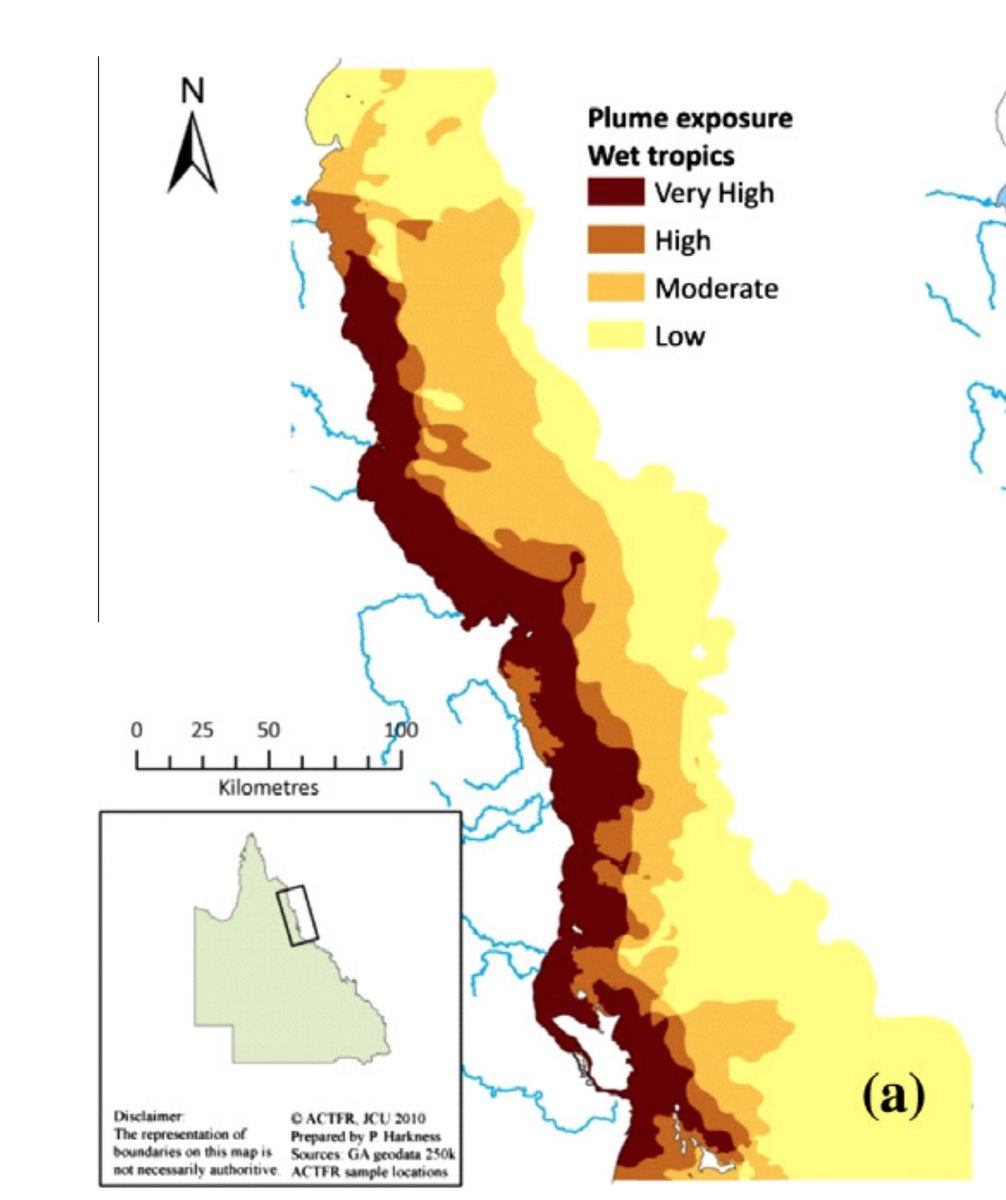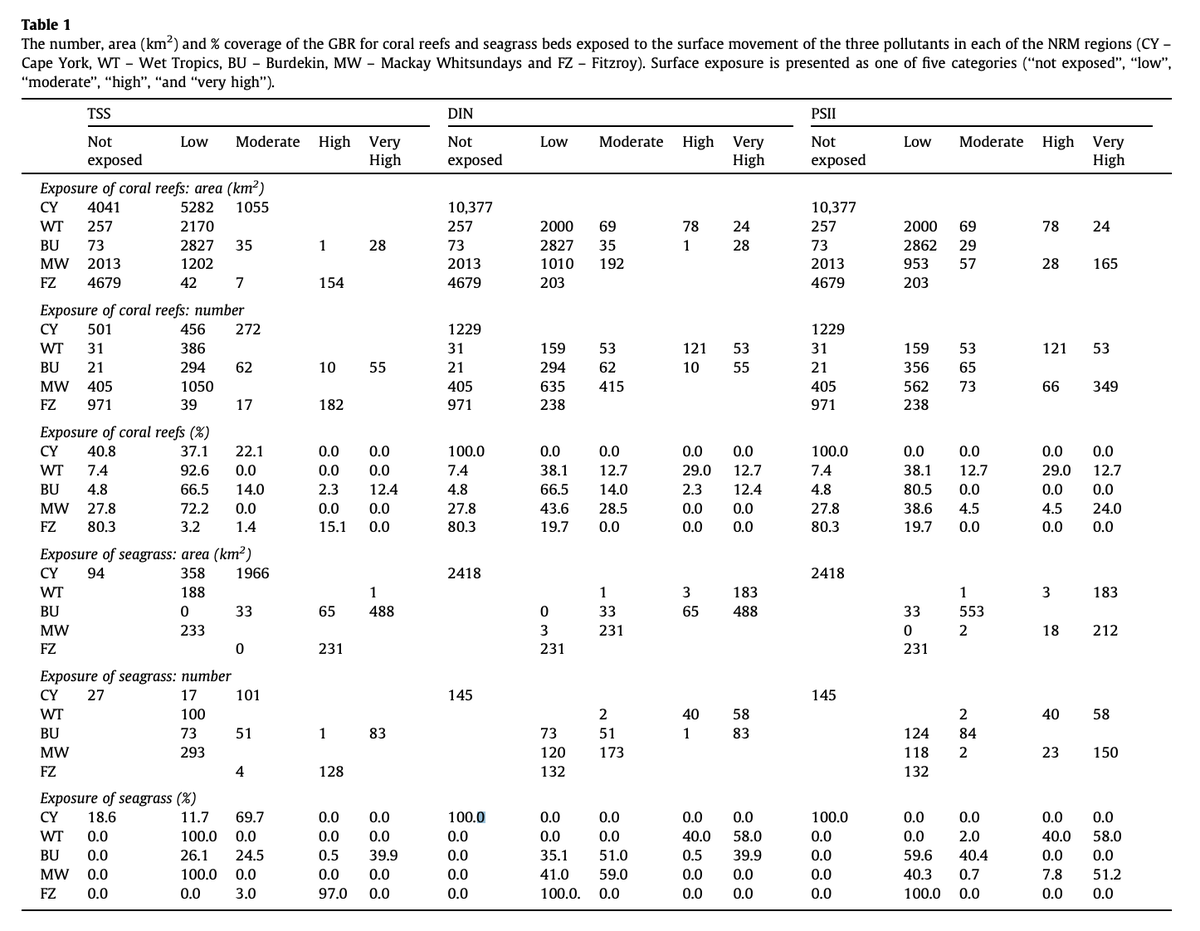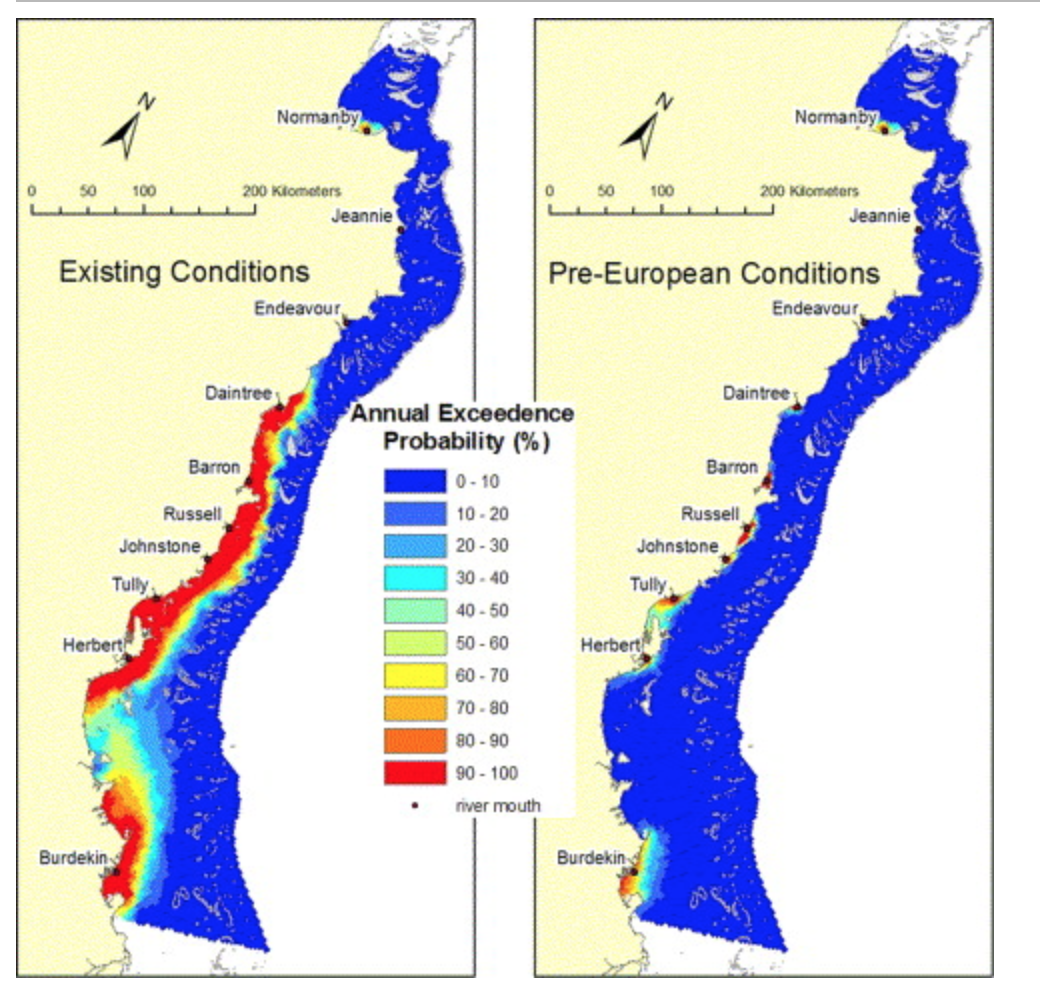Hey @mattjcan I think you've misunderstood this, so i'll break it down for you here with links to published papers (1/n) https://twitter.com/mattjcan/status/1287549878327898112
Herbicides are exported from all agricultural catchments on the Great Barrier Reef, with the pesticide load related to the agricultural activity in adjacent catchments (particularly sugar cane) 2/n https://www.sciencedirect.com/science/article/pii/S0269749109001304
The proportion of reefs impacted by herbicides varies among regions:
0% of reefs in Cape York
92.6% of reefs in the Wet Tropics
95.6% of reefs in the Burdekin
72.2% of reefs in the Whitsundays
19.3% in the Fitzroy region
3/n
https://www.sciencedirect.com/science/article/pii/S0025326X12001063
0% of reefs in Cape York
92.6% of reefs in the Wet Tropics
95.6% of reefs in the Burdekin
72.2% of reefs in the Whitsundays
19.3% in the Fitzroy region
3/n
https://www.sciencedirect.com/science/article/pii/S0025326X12001063
In the Wet Tropics region, 41.7% of coral reefs fall into either the "high" or "very high" category for herbicide exposure
4/n https://www.sciencedirect.com/science/article/pii/S0025326X12001063
4/n https://www.sciencedirect.com/science/article/pii/S0025326X12001063
Similarly for the effects of sediment:
59.2% of reefs in Cape York
92.6% of reefs in the Wet Tropics
95.6% of reefs in the Burdekin
72.2% of reefs in the Whitsundays
19.3% in the Fitzroy region
5/n https://www.sciencedirect.com/science/article/pii/S0025326X12001063
59.2% of reefs in Cape York
92.6% of reefs in the Wet Tropics
95.6% of reefs in the Burdekin
72.2% of reefs in the Whitsundays
19.3% in the Fitzroy region
5/n https://www.sciencedirect.com/science/article/pii/S0025326X12001063
It's not just corals either, 100% of seagrass areas in the Wet Tropics, Burdekin, Whitsundays and Fitzroy regions are impacted by either sedimentation, nitrogen or herbicides
6/n
https://www.sciencedirect.com/science/article/pii/S0025326X12001063
6/n
https://www.sciencedirect.com/science/article/pii/S0025326X12001063
Under pre-European conditions, the nutrient enriching impact from river runoff was likely to have been largely constrained within 1–2 km of the coast, whereas existing conditions support the impact of reefs some 20–30 km off the coast
7/n
https://www.sciencedirect.com/science/article/pii/S0025326X06001883
7/n
https://www.sciencedirect.com/science/article/pii/S0025326X06001883
The claim that "97% of the GBR's corals are not impacted by farm runoff" is incorrect and deliberately misleading ...
8/n
8/n
...and ignores the outcomes of millions of dollars of government funding over the last three decades from dozens of scientists quantifying the impact of land based pollutants on the GBR.
9/n
9/n
I'm interested to see where in the senate estimates hearing you got this "97%" number from
10/n
10/n

 Read on Twitter
Read on Twitter

